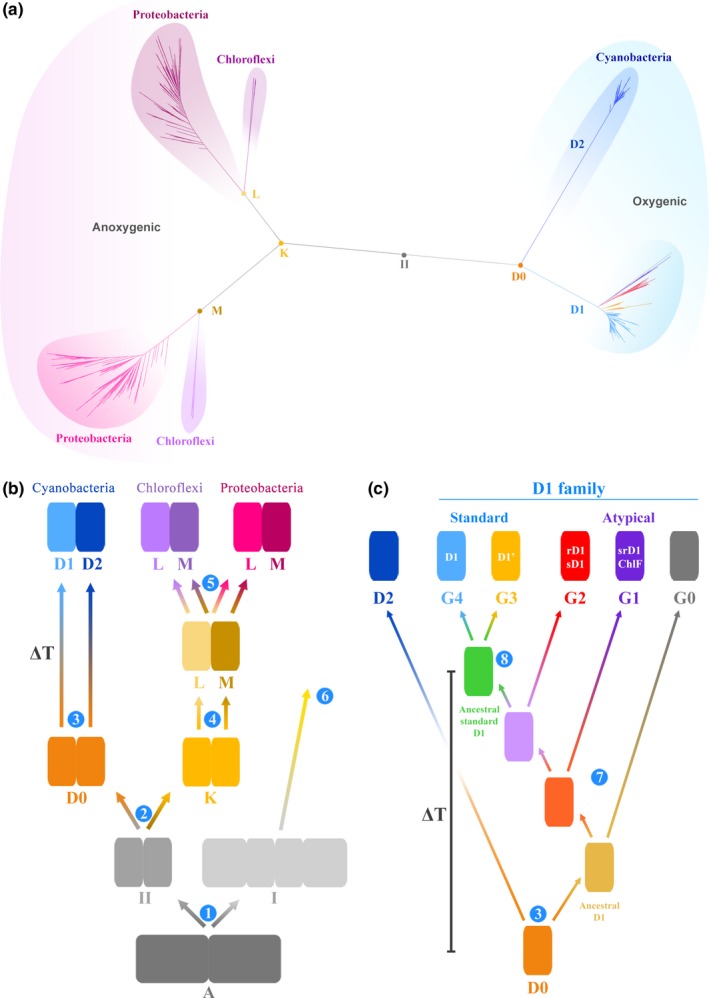Figure 1.

Evolution of Type II reaction center proteins. (a) A maximum likelihood phylogeny of Type II reaction center proteins. (b) A schematic representation of the phylogeny shown in (a). All reaction centers have common ancestry and descended from a homodimeric reaction center, marked A. From A, two new reaction centers emerged, one ancestral to all Type II reaction centers (II) and a second ancestral to all Type I reaction centers. This is the earliest diversification event of reaction center proteins that can be inferred from sequence and structural data and it is marked 1. The ancestral Type II reaction center protein (II) gave rise to two new proteins, one ancestral to D1 and D2, named here D0 and a second ancestral to L and M named K. The ancestral L and M subunits further diversify into Chloroflexi‐type and Proteobacteria‐type L and M subunits (5). Step 6 indicates that Type I reaction center proteins also diversified in parallel to Type II reaction center proteins. (c) Evolution of cyanobacterial D1 and D2, modified from Cardona et al. (2015). G0, G1, and G2 represent atypical D1 forms, and G3 and G4 standard D1 forms. ΔT marks the span of time between D0 and the appearance of the ancestral standard form of D1, which characterizes PSII and predates the most recent common ancestor of all known Cyanobacteria capable of oxygenic photosynthesis [Colour figure can be viewed at wileyonlinelibrary.com]
